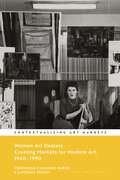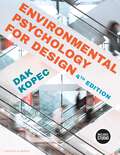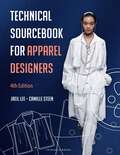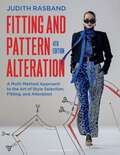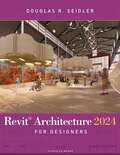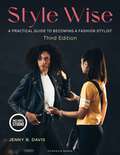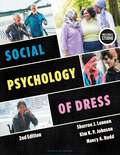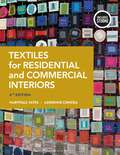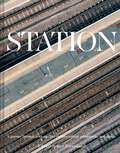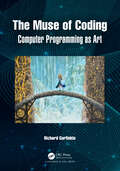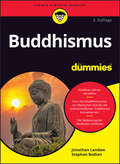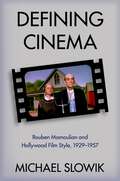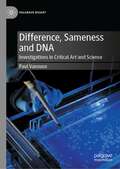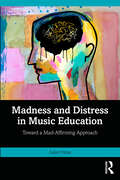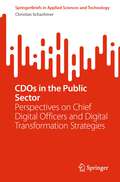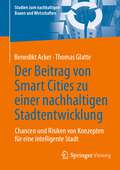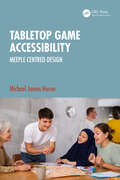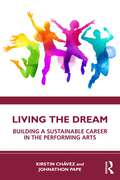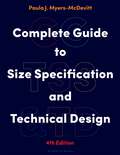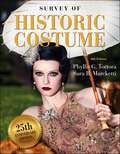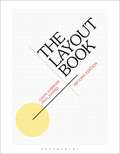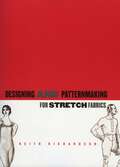- Table View
- List View
Women Art Dealers: Creating Markets for Modern Art, 1940–1990 (Contextualizing Art Markets)
Women Art Dealers brings together fascinating case studies of galleries run by women between the 1940s and 1980s. It marks a departure from other work in the field of art markets, challenging male-dominated histories by analyzing the work of female dealers who anticipated the global model, worked to promote art across continents, and thus developed an international art market. Part 1 focuses on the women gallerists behind the promotion of modern art after World War II who participated in important research about the neo-Avant-Garde. Part 2 examines the contributions by women art dealers toward the birth of new markets – through establishing the reputation of artistic genres, such as video art and photography, and working at the forefront of advancing contemporary art. Finally, Part 3 analyzes case studies from the southern European art scene, paying fresh attention to several under-researched markets in the region like Italy and Portugal. Each chapter study provides a historiographic profile of the gallery under discussion and critical analysis is supported with a wide range of visual material including portraits of the women art dealers, photographs of the exhibitions they managed, and printed documentation like catalogues, invitations, and posters that were often used to support artists on display in experimental ways.
Environmental Psychology for Design: - with STUDIO
by Dak KopecHow does a room affect an occupant's behavior and well-being? How does a building influence its residents' health? Environmental Psychology for Design, 4th Edition, explores these questions with an in-depth look at psychosocial responses to the built environment. Awarded the 2006 ASID Joel Polsky Prize, the first edition served as an introduction to the discipline of environmental psychology and inspired readers to embrace its key concepts and incorporate them into their practice. This 4th edition continues to analyze the interaction between environments and human behavior and well-being, while exploring how individual differences related to age, gender, and cultural background impact that interaction. More discussions on logic formation and argumentation and how these ideas pertain to biological, psychological and sociological paradigms of thought have been incorporated. Additionally, chapters have been rearranged to allow for better content flow, and the emphasis will shift from person specific chapters to be place specific (i.e., schools for youth, long-term care facilities, and more). Ethical Consideration and Pandemic Ponderings box features are included throughout. New to this Edition-Chapters have been reorganized to be more location-centric (ie: schools, long-term care facilities, etc)-Ethical Consideration and Pandemic Ponderings box features included for further discussion of timely topics STUDIO Features Include -Study smarter with self-quizzes featuring scored results and personalized study tips -Review concepts with flashcards of terms and definitions Instructor Resources-Instructor's Guide to help integrate the text into your classroom-PowerPoint Slides for every chapter
Technical Sourcebook for Apparel Designers: - with STUDIO
by Jaeil Lee Camille SteenLearn technical design processes and industry standards, such as ASTM and ISO, for apparel production and manufacturing practices. With more than 1,200 images and technical packages for 12 apparel products, the book explains topics like fabric selection, finding seasonal fashion trends, garment construction, and fit evaluation, all so you can cost-effectively meet consumer needs. You'll learn about product categories including women's wear, menswear, and knitwear, as well as how to create a cost sheet and manage product data, to help you develop specification sheets and technical packages for specific markets. The 4th edition has been revised to include the use of sustainable materials, entrepreneurship and the job market, buying seasons as affected by the Covid-19 pandemic and supply chain, sourcing considerations, sizing and fit tips for diverse body types, and more. New to this Edition· Includes new information on sustainability and sourcing · Discusses changes in buying seasons as affected by the Covid-19 pandemic· Delves into the job market, job roles, and entrepreneurship · Updated to include sizing and fit tips for diverse body types STUDIO Features Include· Study smarter with self-quizzes featuring scored results and personalized study tips· Review concepts with flashcards of terms and definitionsInstructor Resources· Instructor's Guide to help integrate the text into your classroom· PowerPoint slides for every chapter
Fitting and Pattern Alteration: A Multi-Method Approach to the Art of Style Selection, Fitting, and Alteration - with STUDIO
by Judith Rasband Elizabeth Liechty Della Pottberg-SteineckertFitting and Pattern Alteration: A Multi-Method Approach to the Art of Style Selection, Fitting, and Alteration, Fourth Edition, shows readers how to recognize, evaluate, and correct fit for a variety of body types, sizes, for women, men, and children. This comprehensive guide presents proven methods of style selection, fitting, and alteration. The authors use a multi-level approach that is both logical and easy to follow, and each procedure is clearly identified and fully illustrated with a second color added to clarify the procedure and show directional measuring. Each figure is drawn to scale ensuring consistency and accuracy. The cause for the fitting problem is clearly identified and explained--giving readers the why behind each fitting procedure. Highlights of this edition include discussions of sustainable practices, body diversity, and now includes examples for menswear and childrenswear. New to this Edition -Discusses sustainable practices, in accordance with industry standards -Now includes diverse body sizes, body types, and discussions around body positivity -Newly added examples for menswear and childrenswear STUDIO Features Include-Study smarter with self-quizzes featuring scored results and personalized study tips -Review concepts with flashcards of terms and definitions Instructor Resources-Instructor's Guide to help integrate the text into your classroom-PowerPoint Slides for every chapter
Revit Architecture 2024 for Designers: - with STUDIO
by Douglas R. SeidlerRevit is rapidly replacing AutoCAD as the digital drawing tool of choice for architects and interior designers. This book aims to help design students master Revit as a tool in the design studio and in practice. Revit Architecture 2024 for Designers is both a thorough primer for new learners and expanded conceptual discussion for design professionals. The progressive introduction of concepts (chapters build on previous chapters), digital exercises, and professional examples make this book easy to follow for learners new to Revit. Packed with visual examples, Revit Architecture 2024 for Designers is written specifically for architecture students and interior design students. It provides a thorough primer for new learners and advanced instruction for designers. What's new to this Edition?· Instruction Graphics updated for Revit Architecture 2024 features and user interface· New instruction on importing AutoCAD files and PDFs (Ch 2); Photorealistic Rendering (Ch 7); and Interior Elevations (Ch 8)· New instructional examples on Advanced Modeling (Ch 9) and Construction Details (Ch 12)
Style Wise: A Practical Guide to Becoming a Fashion Stylist - with STUDIO
by Jenny B. DavisStyle Wise: A Practical Guide to Becoming a Fashion Stylist, 3rd Edition is an essential text for turning aspiring stylists into professional stylists. The text presents fashion styling as a form of communication that can both support and challenge social norms such as beauty standards and gender roles. Full-color photos and examples from the runway reflect the fast-paced, vibrant fashion industry and cover topics including photo shoots, fashion shows, and special events. Step-by-step instructions guide readers through crucial areas like business basics, establishing a social media presence, and networking, while hands-on projects provide opportunities to develop a portfolio. Timelines, infographics, interviews, and learning activities that focus on the digital side of the fashion industry boost engagement and bring students up-to-date on careers in styling. New to this Edition:-New “The Go-By”, “The Pull List”, and “Talent Credits” features engage students with controversies in contemporary styling, provide biographies of top designers and brands, and give insights on how key individuals have contributed to the styling profession -Emphasis on diversity, equity, and inclusion represents plus-sized and differently-abled models as well as style icons and moments in fashion history from various geographic, ethnic, and gender groups-Coverage of topical issues such as gender-neutral fashion, cultural appropriation, and the effects of the Covid-19 pandemic -New sections on color theory, fabric, and cultural and religious fashionsSTUDIO Features Include: -Study smarter with self-quizzes featuring scored results and personalized study tips -Review concepts with flashcards of terms and definitions -Access samples of documents, forms, and templates for all stages of planning a photo shoot including a call sheet form, supply checklist, planning calendars, and more Instructor Resources-An Instructor's Guide to help incorporate this text into the classroom, including a test bank to provide options for student assessment -PowerPoint® presentations include images from the book and provide a framework for lecture and discussion
Social Psychology of Dress: - with STUDIO
by Sharron J. Lennon Kim K. Johnson Nancy A. RuddSocial Psychology of Dress, 2nd Edition presents and explains the major theories and concepts of human behavior relating to dress, drawing from the social science fields of psychology, sociology, and anthropology. The text positions dress as a process in which individual preferences, membership in social groups, and cultural awareness all impact choices about attire and appearance. Using empirical data and examples from current events and popular culture, the authors define dress, present its origins and functions, and discuss research methods for dress. They also explore the relationships between dress and topics including social perception, impression formation, identity, cultural patterns and rituals, and body image. Box features highlighting applications to the fashion industry, end-of-chapter summaries, and discussion questions to further engage students in their study of dress. New to this Edition: -New Dress Research in the News, Application to Consumer Behavior, and Social Media Application features and updated Dress in the News features addressing contemporary topics such as cultural appropriation, workplace discrimination, and advocacy for racial inclusivity -Increased focus on diverse cultural influences-Coverage of current industry trends including new research findings, smart clothing, and the body positivity movement -Discussion of the Covid-19 pandemic through examples and case studies STUDIO Features Include: -Study smarter with self-quizzes featuring scored results and personalized study tips -Review concepts with flashcards of essential vocabulary Instructor Resources-Instructor's Guide provides suggestions for planning the course and using the text in the classroom, supplemental assignments, and lecture notes-Test Bank includes sample test questions for each chapter -PowerPoint® presentations include images from the book and provide a framework for lecture and discussion-In-class activities stimulate student engagement with course material -Online chat activities encourage student participation and provide creative alternatives for content delivery
Textiles for Residential and Commercial Interiors: - with STUDIO
by MaryPaul Yates Adrienne ConcraLearn how to choose the right type of textile for your residential and commercial interior design. This book includes important information about fiber and fabrics for household and institutional textiles, and commercial and residential textiles. It also touches on specific design techniques such as the latest textile printing methods and technologies, the newest performance-related finishes, proper window treatment, and the best environmentally conscious sustainability approaches. The line drawings and photographs show yarns, weaving, manufacturing equipment, fibers, fabrics used in a variety of interior spaces, and many more. New to this Edition- Updated to include the newest codes and guidelines for fabric performance and evaluation - Exploration of new textile printing methods and technologies- Updated fire safety methods and flammability testing STUDIO Features Include- Study smarter with self-quizzes featuring scored results and personalized study tips- Review concepts with flashcards of terms and definitions Instructor Resources- Instructor's Guide to help integrate the text into your classroom- PowerPoint slides for every chapter
Station: A journey through 20th and 21st century railway architecture and design
by Christopher BeanlandA glorious global celebration of modern railway architecture in the mid-20th century and beyond. Many railway books are about nostalgia for the steam age, but this one is different: a global study of railway architecture from the 1950s onwards and into the future. In 50 fascinating entries, renowned travel and architecture writer Christopher Beanland looks primarily at stations but also covers starkly brutalist signal boxes and depots, charming art-adorned undergrounds and international examples of pioneering signage and design. Station explores LA's iconic Union Station, the verdant Atocha Station in Madrid and Warsaw's spectacular modernist stations, but it also includes less familiar examples such as Saudi Arabia's high-speed Haramain Line, the joyous monorail at Walt Disney World Resort and Mexico's anticipated Tren Maya. The book also contains essays on topics including hanging railways in Germany and Japan, the intriguing architecture and design of Berlin's U-Bahn stations and the joy of interrailing. Illustrated with glorious photographs throughout, this stylish and contemporary book is a celebration of modern railway architecture at its best and will appeal to rail enthusiasts and architecture aficionados alike.
The Muse of Coding: Computer Programming as Art
by Richard GarfinkleThis book gives students and experienced programmers a way to see coding as an art and themselves as artists whose personal views, experiences, and ways of thinking can make their programs better for themselves and their users.This book shows in a good-humored and sympathetic way how the artistic and practical sides of programming are the same, delving into the methods of coding, the history of art, and the ways in which artists and audiences interact and benefit each other.Not confined to a single language or style of coding, this book provides a widely applicable framework for people to learn what languages and styles work best for them at present and as the field evolves. It can be used as a classroom text or for personal study and enrichment.
Buddhismus für Dummies (Für Dummies)
by Jonathan Landaw Stephan BodianDas Glück liegt in Ihnen, nicht in diesem Buch Erfahren Sie, was den Buddhismus für viele so faszinierend macht. Jonathan Landaw und Stephan Bodian führen leicht verständlich in diese fernöstliche Lehre ein. Sie berichten vom Leben des historischen Buddha und von den unterschiedlichen Traditionen, die sich über die Jahrhunderte entwickelt haben. Die Leser lernen, was es mit dem Kleinen (Hinayana) und dem Großen Fahrzeug (Mahayana) auf sich hat, wie sich der Zen-Buddhismus von der tibetanischen Schule unterscheidet und vieles mehr. Außerdem zeigen die Autoren, wie der Buddhismus unseren Alltag bereichert. Sie erfahren Wie Sie in westlichen Kulturen dem Pfad der Erleuchtung folgen Wie der Geist Glück und Leiden erzeugt Was zum Wesen eines Buddhisten gehört Welche Interpretationen der Erleuchtung es gibt
Defining Cinema: Rouben Mamoulian and Hollywood Film Style, 1929-1957 (Oxford Music / Media)
by Michael SlowikArriving in cinema when synchronized sound had just been adopted, director Rouben Mamoulian demonstrated key early methods for making sound aid storytelling, for giving films a crisper sense of rhythm, for creating musicals set in backstage, fairy-tale, and folk environments, for providing intricate and arresting colour palettes, and for rendering sexual content more palpable under industry censorship. Mamoulian also wrote many articles throughout his lifetime and gave interviews and lectures where he advanced his complex ideas about the potentials of various artforms, including cinema. In addition, he left an extensive paper record of his work, including heavily annotated scripts for each of the sixteen films he directed. Mamoulian also enjoyed major success on the stage. He directed the original landmark productions of Porgy, Porgy and Bess, Oklahoma!, and Carousel, and his efforts in this domain informed his film work. Defining Cinema takes a holistic look at Mamoulian's oeuvre by examining both his stage and his screen work, and also brings together insights from his correspondence, his theories on film, and analysis of the films themselves. It presents a filmmaker whose work was innovative and exciting, who pushed hard on cinema's potential as an artform, and who in many ways helped move cinema towards the kind of entertainment that it remains today. The book thus tells a story that is vital not just for better understanding the work of a neglected filmmaker, but for anyone interested in the history of Hollywood filmmaking.
Difference, Sameness and DNA: Investigations in Critical Art and Science (Palgrave BioArt)
by Paul VanouseThis book chronicles over two decades of critical, artistic investigations by Paul Vanouse. His bio-media artwork utilizes the tools of the life sciences reflexively, to challenge tropes and cultural politics surrounding DNA, biotechnology, and life itself. DNA has been called a “Truth Machine”, “God’s Blueprint”, the “Code of Codes” and the “Book of Life”. Vanouse’s work explores questions at the heart of such evocative metaphor and hyperbole: how does DNA link us together, how does it differentiate us and how are the grand metaphors, which grant DNA complete centrality, misconstruing the complexity of life. Furthermore, how do technologies of genetic typing and identification fit within a broader cultural and political history of difference making, particularly the construction of race. Melding critical theory, artist’s manifesto, participatory observation and histories of the sciences, this book offers insight into both an artistic practice and the bio-techno-sciences it interrogates.
Madness and Distress in Music Education: Toward a Mad-Affirming Approach
by Juliet HessMadness and Distress in Music Education offers an in-depth exploration of mental health and emotional distress in the context of music education, offering new ways of thinking about these experiences and constructing ways to support distress through affirming pedagogy, practices, and policies in music education. Centering the lived experiences of 15 people in a range of roles across music education who self-identify an issue with their mental health, the volume addresses impacts on both students and educators. The author draws on Mad Studies and disability studies to present new paradigms for thinking about Madness and distress in the music context. An essential resource for music educators, music education researchers, and preservice students seeking to understand the complexities of mental health in the music classroom, this book considers how people conceptualize their mental health, how distress impacts participation in music education, how music education may support or exacerbate distress, and what supports for distress can be implemented in music education.
Madness and Distress in Music Education: Toward a Mad-Affirming Approach
by Juliet HessMadness and Distress in Music Education offers an in-depth exploration of mental health and emotional distress in the context of music education, offering new ways of thinking about these experiences and constructing ways to support distress through affirming pedagogy, practices, and policies in music education. Centering the lived experiences of 15 people in a range of roles across music education who self-identify an issue with their mental health, the volume addresses impacts on both students and educators. The author draws on Mad Studies and disability studies to present new paradigms for thinking about Madness and distress in the music context. An essential resource for music educators, music education researchers, and preservice students seeking to understand the complexities of mental health in the music classroom, this book considers how people conceptualize their mental health, how distress impacts participation in music education, how music education may support or exacerbate distress, and what supports for distress can be implemented in music education.
CDOs in the Public Sector: Perspectives on Chief Digital Officers and Digital Transformation Strategies (SpringerBriefs in Applied Sciences and Technology)
by Christian SchachtnerThis book explores the need for innovative approaches to administrative digitization, leveraging technologies such as AI, blockchain, and smart processes to meet citizens' expectations, with a particular focus on the role of Chief Digital Officers (CDOs) in driving successful digital transformations within public institutions. Administrative digitization requires fresh inputs to match the leaps seen in the industry sector, utilizing technologies like AI-driven automation, blockchain transactions, and security tools. Smart process solutions are seen as transformative in upholding service standards aligned with citizens' state expectations. Unlike commercial companies, collaboration offers those overseeing public sector digitization enhanced scaling opportunities by drawing from experiences in other regions and metropolises, directly applicable and reusable. In the public realm, digital strategies mirror legal and social conditions, necessitating adjustments and adaptation options for Chief Digital Officers as they lead digital transformation. Methodological focal points in task structure redesign, process optimization, and motivating actors yield diverse action areas for the CDO's new role in public institutions. This book explores the instruments, strategies, and attitudes necessary to successfully implement transformative initiatives in organizations, emphasizing proven concepts with practical applicability, enabling readers to derive their own interaction options as digital guidance leaders. The book is a concise introduction to the specific requirements for visionary designers driving dynamic changes in user-centric public services.
Der Beitrag von Smart Cities zu einer nachhaltigen Stadtentwicklung: Chancen und Risiken von Konzepten für eine intelligente Stadt (Studien zum nachhaltigen Bauen und Wirtschaften)
by Benedikt Acker Thomas GlatteDieses Fachbuch vermittelt einen umfassenden Überblick über den Beitrag, welchen eine Smart City zu einer nachhaltigen Stadtentwicklung leisten kann. Unter Bezugnahme aktuell präsenter Megatrends erfolgt eine systematische Einordnung der Rolle der Immobilienwirtschaft im umfassenden Konstrukt einer intelligenten Stadt. Mittels Analysen vielversprechender Konzepte im Bereich der Smart City wird dabei der zusätzliche Mehrwert herausgearbeitet, welcher im Kontext der Nachhaltigkeit bei der Modernisierung und Revitalisierung von Gebäuden und Quartieren entstehen kann.
Tabletop Game Accessibility: Meeple Centred Design
by Michael James HeronThis foundational resource on the topic of tabletop game accessibility provides actionable guidelines on how to make games accessible for people with disabilities. This book contextualises this practical guidance within a philosophical framework of how the relatively abled can ethically address accessibility issues within game design.This book helps readers to build understanding and empathy across the various categories of accessibility. Chapters on each category introduce ‘the science’, outline the game mechanics and games that show exemplar problems, relate these to the real-world situations that every player may encounter, and then discuss how to create maximally accessible games with reference to the accessibility guidelines and specific games that show ‘best-in-class’ examples of solutions.This book will be of great interest to all professional tabletop and board game designers as well as digital game designers and designers of other physical products.
Tabletop Game Accessibility: Meeple Centred Design
by Michael James HeronThis foundational resource on the topic of tabletop game accessibility provides actionable guidelines on how to make games accessible for people with disabilities. This book contextualises this practical guidance within a philosophical framework of how the relatively abled can ethically address accessibility issues within game design.This book helps readers to build understanding and empathy across the various categories of accessibility. Chapters on each category introduce ‘the science’, outline the game mechanics and games that show exemplar problems, relate these to the real-world situations that every player may encounter, and then discuss how to create maximally accessible games with reference to the accessibility guidelines and specific games that show ‘best-in-class’ examples of solutions.This book will be of great interest to all professional tabletop and board game designers as well as digital game designers and designers of other physical products.
Living the Dream: Building a Sustainable Career in the Performing Arts
by Kirstin Chávez Johnathon PapeLiving the Dream: Building a Sustainable Career in the Performing Arts offers an accessible guide to understanding one’s arts career as a business. This essential companion to the inner workings of the arts world begins with defining the dream, including how to conceive mission statements, branding and business plans. Part II covers sharing the dream with others through social media, networking, and working with agents or artist managers. Part III offers an overview of the financial aspect, including budgets, taxes, and managing risks. Part IV concludes by discussing the realities of an arts career, including work/life balance, preparing for the future, and managing mental health. This practical and insightful overview is a must‑have companion for aspiring and early career professionals in the performing arts, as well as students on a range of arts courses, including Music Business, Entrepreneurship, and Career Skills classes.
Living the Dream: Building a Sustainable Career in the Performing Arts
by Kirstin Chávez Johnathon PapeLiving the Dream: Building a Sustainable Career in the Performing Arts offers an accessible guide to understanding one’s arts career as a business. This essential companion to the inner workings of the arts world begins with defining the dream, including how to conceive mission statements, branding and business plans. Part II covers sharing the dream with others through social media, networking, and working with agents or artist managers. Part III offers an overview of the financial aspect, including budgets, taxes, and managing risks. Part IV concludes by discussing the realities of an arts career, including work/life balance, preparing for the future, and managing mental health. This practical and insightful overview is a must‑have companion for aspiring and early career professionals in the performing arts, as well as students on a range of arts courses, including Music Business, Entrepreneurship, and Career Skills classes.
Complete Guide to Size Specification and Technical Design: - with STUDIO
by Paula J. Myers-McDevittComplete Guide to Size Specification and Technical Design, 4th Edition, equips students with everything they need to know about measuring sample garments, creating fully graded spec sheets for grading patterns, fitting garments, and offering pattern alterations. Over 500 technical flats are clearly labeled with measurement points and instructions for taking measurements. The book includes spec sheets for different types of garments and industry forms within the context of the production process. Several sections are devoted to instruction on measuring the human body, PLM/PDM software, correct fitting issues (with suggestions for pattern alterations), and grade rules for both number and letter sizing. It also includes over 60 basic fashion flats and instructions on metric conversions in the Appendices.New to this Edition· Coverage of current topics like diversity and diverse body sizes, industry changes due to the pandemic, and sustainability· Inclusion of tech packs and a variety of flats and croquis · “Tricks of the Trade” call boxes addressing key industry examples and how to deal with common challengesSTUDIO Features Include:· Watch videos that bring chapter concepts to life· Download templates of blank and sample spec sheets, and basic garment and figure croquis to practice technical design skills· Study smarter with self-quizzes featuring scored results and personalized study tips· Review concepts with flashcards of essential vocabulary· Access useful resources like a Care Labeling Guide, Ordering a Dress Form Guide and a Buttonline CardInstructor Resources· Instructor's Guide provides suggestions for planning the course and using the text in the classroom· PowerPoint Slides for each chapter to help incorporate the text into the classroom
Survey of Historic Costume
by Phyllis G. Tortora Sara B. MarckettiSurvey of Historic Costume, 6th Edition, is the best-selling introduction to Western dress from the ancient world through the twenty-first century. Each chapter presents social, cross-cultural, environmental, geographic, and artistic influences on clothing. With visuals, illustrated tables, and in-depth discussions, readers come to recognize recurring themes and concepts and understand the role of dress from a diverse, global perspective. The new edition features more than 1,000 full-color photographs and illustrations, a new feature that examines global dress, and a fully updated chapter on the twenty-first century. New Student Resources~ Survey of Historic Costume STUDIO features digital study tools such as visual flashcards, self-quizzes, videos, a timeline and assignments and activities and includes a free Student Study Guide eBook to help students master concepts and improve grades.New to this Edition~ Chapter Timelines present an overview and images of historic events in each chapter focusing on fashion and textiles, politics and conflicts, decorative and fine arts, economics and trade, technology, and religion~ New Global Connections boxed highlights dress and textiles from around the world including China, India, Japan, Latin America, Africa and more~ New Chapter 20 covering twenty-first century dress from 2000 to presentKey Features ~ Contemporary Comments from contemporary sources provide a sense of the attitude toward clothing of individuals of the period~ Modern Influences photo feature explains historic costume is reinterpreted in modern fashion design~ Visual Summary Tables show clear line drawing of period garments and Illustrated Tables depict important accessories, footwear and headwear ~ Companion Survey of Historic Costume Student Study Guide (9781628922349) includes historic snapshots, review questions, summary tables, visual quizzes and glossary of key terms.Teaching Resources~ Instructor's Guide including sample syllabi and units based on the timeline in the book, chapter objectives, lecture notes, discussion questions, additional research projects, assignments, and an answer key for the Student Study Guide~Test Bank with multiple choice, true/false and essay questions for each chapter with answer key~ Image Bank with all the illustrations and photos from the text~ PowerPoint presentations for each chapter
The Layout Book (Required Reading Range)
by Gavin Ambrose Mr Paul HarrisA fascinating exploration of this fundamental aspect of graphic design, The Layout Book explains the hows, whys and why-nots of the placing of elements on a page or screen layout. A historical overview of the subject is followed by a systematic look at key theoretical principles and practical applications.Offering a huge array of potential layout options and with over 200 color illustrations from some of the world's leading design studios, whether you are working in print or digital media this book encompasses a variety of creative approaches. The second edition has also been updated to include interviews with practising designers, as well as new exercises to aid readers in their own explorations.Invaluable for design students looking for a better understanding of layout design, and inspiring for working designers, The Layout Book proves itself as a graphic design must-have.
Designing and Patternmaking for Stretch Fabrics
by Keith RichardsonStretch fabrics are more popular than ever, from Juicy Couture's sweats to the trendy, ready-to-wear styles found at H&M. Stretch fabrics have long been a staple of designer fashion as well-from Missoni's colorful knits to Donna Karan's basics. Designing and Patternmaking for Stretch Fabrics provides the design student or working designer with the essential information for understanding the specifics of knit fabrics and the patternmaking process for different garments. Fibers, dyes, treatments, care, and fabric sources are discussed, along with the principles of sizing and measuring for women's, men's, petite, plus, and half sizes. Chapters focusing on particular garments begin with a draft of a sloper. Numerous illustrations and diagrams demonstrate the effects of draping, gathering, shirring, ruffling, and making adjustments as needed to flatter the wearer. These instructions will put students' skills and creativity to work with everything they need to turn an ordinary garment into one of original designer quality.
